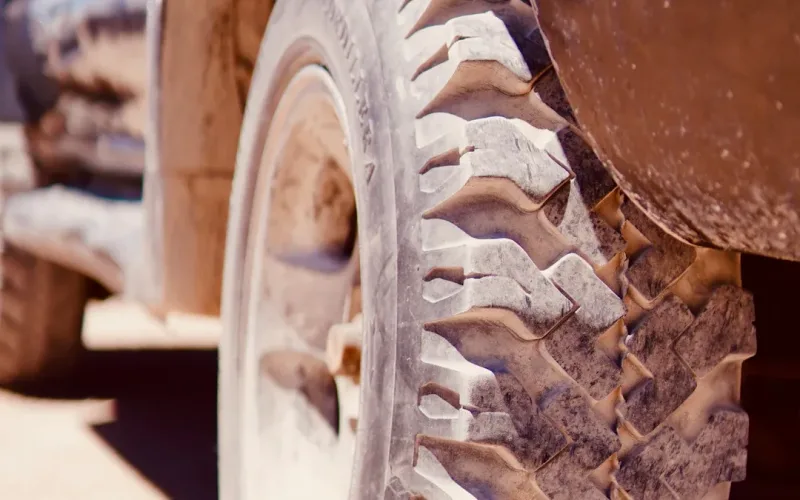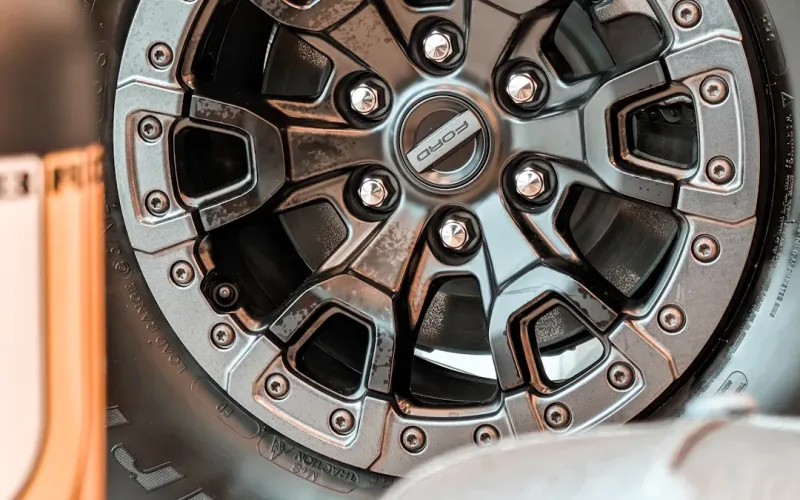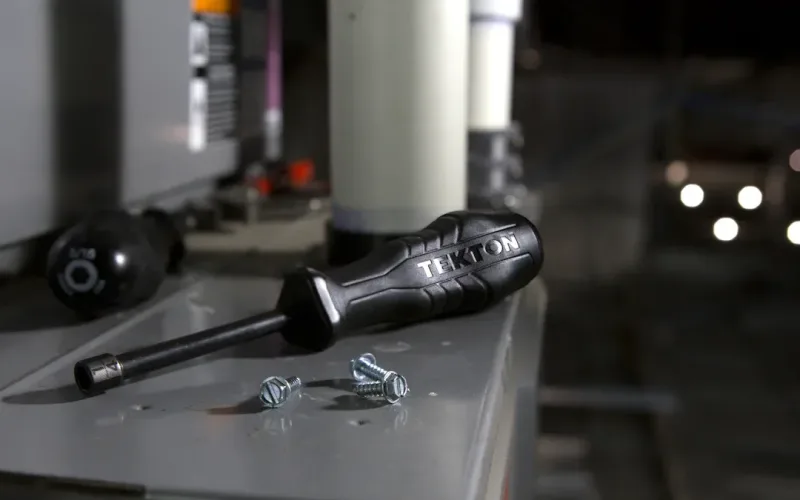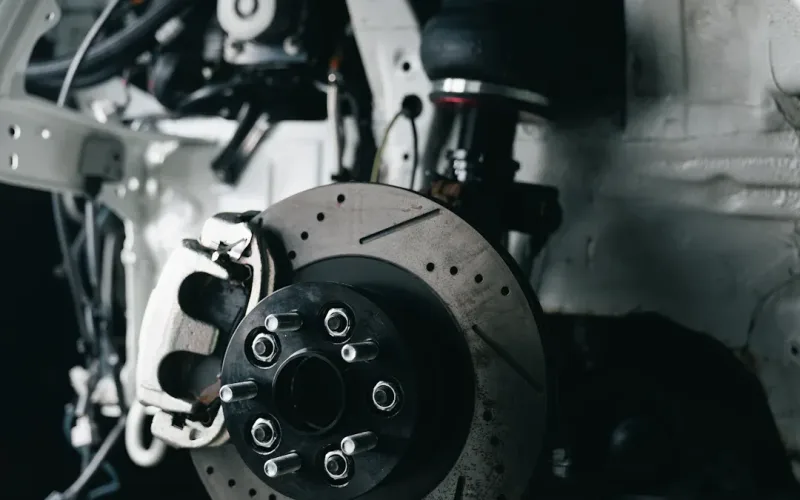

admin1
July 15, 2025
Wheel Valve Stem Failures and Their Effect on Tire Safety in 2025
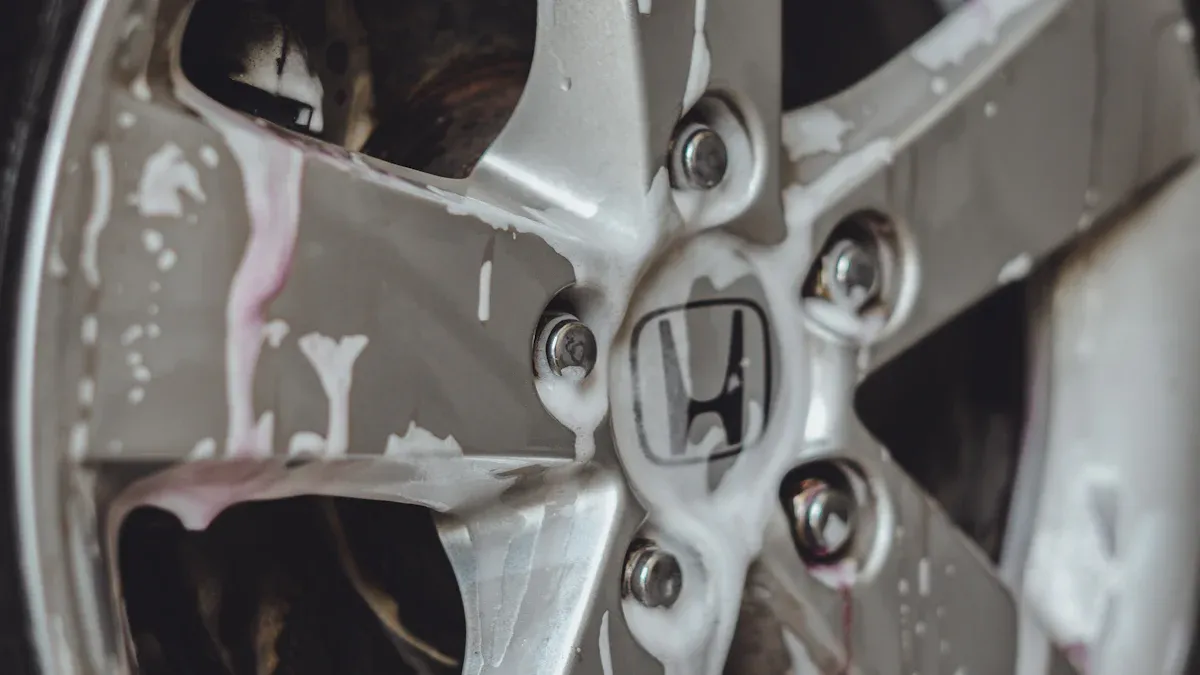
You depend on your car tyre valve to keep your tyre pressure steady. When a wheel valve stem fails, you can lose air from your tyre fast. This problem can cause a blowout or make you lose control of your vehicle. A weak car tyre valve puts your safety at risk every time you drive. Even a small crack in the valve can lead to sudden tyre air loss. In 2025, new tyre designs and advanced valve materials make checking your wheel valve stem more important than ever. Pay close attention to every car tyre valve and valve stem to protect your tyre and your safety.
Wheel Valve Stem Failures and Tire Safety Risks in 2025
Air Loss, Blowouts, and Immediate Dangers
You rely on your tyre valve to keep air inside your tire. When a wheel valve stem fails, you face serious safety risks. Even a small crack or worn spot on the valve can let air escape. This air loss may happen slowly, but sometimes it happens all at once. If your tire loses pressure quickly, you could experience a blowout. Blowouts often cause drivers to lose control of their vehicles.
Here are some main ways wheel valve stem failures lead to sudden air loss and blowouts in 2025 vehicles:
- Valve stems that cannot handle the required pressure may leak air, which reduces traction and can cause sudden tire failure.
- Overinflating your tire beyond the valve stem’s maximum pressure rating can make the valve fail, leading to rapid deflation and blowouts.
- Cracks, discoloration, or visible wear on the valve increase the risk of air leaks and sudden air loss.
- Skipping regular inspections or not replacing damaged valve stems increases the chance of tire failure.
- Using quality inflation equipment and keeping the correct tire pressure helps prevent valve stem damage and keeps your tyre safe.
Tip: Always check your tire valve stems for cracks or damage when you check your tyre pressure. Small problems can become big dangers if ignored.
Impact on Vehicle Handling and Braking Safety
When your tire loses pressure because of a faulty valve, your car does not handle as it should. Low pressure in your tyres makes steering harder and reduces your ability to stop quickly. You may notice your car pulling to one side or feeling unstable, especially at higher speeds. This loss of control puts you and others at risk.
Tire valve stems play a key role in keeping your tyre pressure steady. If the valve fails, your tire may not grip the road well. Poor grip means longer stopping distances and less control during emergency maneuvers. You need proper pressure in all your tires for the best performance and safety.
Many people think tires only lose air if they get punctured. In reality, valve stem damage is a common cause of air loss. The valve core and cap keep air in and dirt out. If you lose the cap or the valve gets damaged, you may have slow or rapid leaks. Regularly checking your valve stems and replacing them when needed helps you avoid these problems.
Accident Risk from Compromised Tire Performance
When your tire valve stems fail, your tire performance drops. This can lead to accidents. Modern vehicles use Tire Pressure Monitoring Systems (TPMS) to warn you about low pressure. If the valve stem is damaged, the TPMS sensor may not work. You might not get a warning about underinflated or overinflated tires.
Corrosion from moisture, road salt, or extreme temperatures can damage valve stems, especially aluminum ones. This damage can cause the TPMS to give false readings or no readings at all. If you ignore these faults, you drive without knowing your true tire pressure. Underinflated tires increase the risk of blowouts, reduce traction, and make it harder to stop. The National Highway Traffic Safety Administration links tire issues, including underinflation, to many single-vehicle crashes and blowouts.
Note: The consequences of negligence in tyre valve maintenance are serious. Ignoring valve stem problems can lead to tire failure, loss of control, and accidents. Always repair or replace faulty valve stems right away.
You must understand the dangers of faulty valve stems. Proper maintenance and timely replacement of tire valve stems are essential for your safety. The consequences of negligence in tyre valve maintenance include poor tire performance, higher accident risk, and costly repairs. Make valve checks part of your regular tyre care routine to keep your vehicle safe on the road.
What Is a Wheel Valve Stem and Its Role in Tire and Tyre Safety
Function of the Car Tyre Valve in Maintaining Pressure
You depend on the car tyre valve every time you drive. This small part lets you add air to your tyre and keeps it from escaping. The car tyre valve works as a one-way system. Air enters your tyre through the valve, but it cannot get out unless you press the pin inside. The valve core inside the wheel valve stem acts as the main seal. It holds the air in and keeps your tyre at the right pressure. The valve cap adds another layer of protection. It blocks dirt, water, and other debris from getting into the car tyre valve. If you keep your car tyre valve in good shape, your tyre holds the correct pressure. This helps your tyre last longer and keeps you safe on the road. Regular checks and maintenance of the car tyre valve prevent air loss and make sure your tyre performs well.
Types of Wheel Valve Stems in 2025: Rubber, Metal, TPMS-Compatible
In 2025, you can choose from several types of car tyre valves for your tyres. The most common types include tubeless rubber snap-in valves, high-pressure rubber valves, and metal clamp-in valves. Each type fits different needs. Rubber snap-in valves work well for most passenger vehicles. High-pressure rubber valves suit trucks and larger vehicles that need more pressure. Metal clamp-in valves offer extra strength and are often used on performance cars or vehicles with aluminum wheels. Many modern cars use TPMS-compatible car tyre valves. These valves work with tire pressure monitoring systems to help you track your tyre pressure. TPMS-compatible valves come in both rubber and metal styles. They help prevent air leaks and protect against corrosion. Valve caps and nickel-plated cores add more safety by blocking moisture and dirt. You should always match the right car tyre valve to your tyre and vehicle for the best safety.
Advances in Valve Stem Materials and Technology
You see many new features in car tyre valves in 2025. Manufacturers use advanced materials to make the wheel valve stem stronger and more reliable. Some car tyre valves now have special press-plugs that melt at high temperatures. This feature gives you a warning if your tyre gets too hot. Other car tyre valves use sensors that mount directly on the valve stem. These sensors let you check your tyre pressure without removing the sensor. Some systems send real-time tyre pressure and temperature data to your dashboard. You get alerts if your tyre loses air quickly or gets too hot. New flow-through valve stem extensions handle tough conditions like heat and off-road driving. Some car tyre valves have batteries you can replace without removing the tyre. These changes make it easier for you to keep your tyres safe and your car tyre valve working well. With these advances, you can spot problems early and avoid tyre failures.
Causes and Types of Wheel Valve Stem Failures
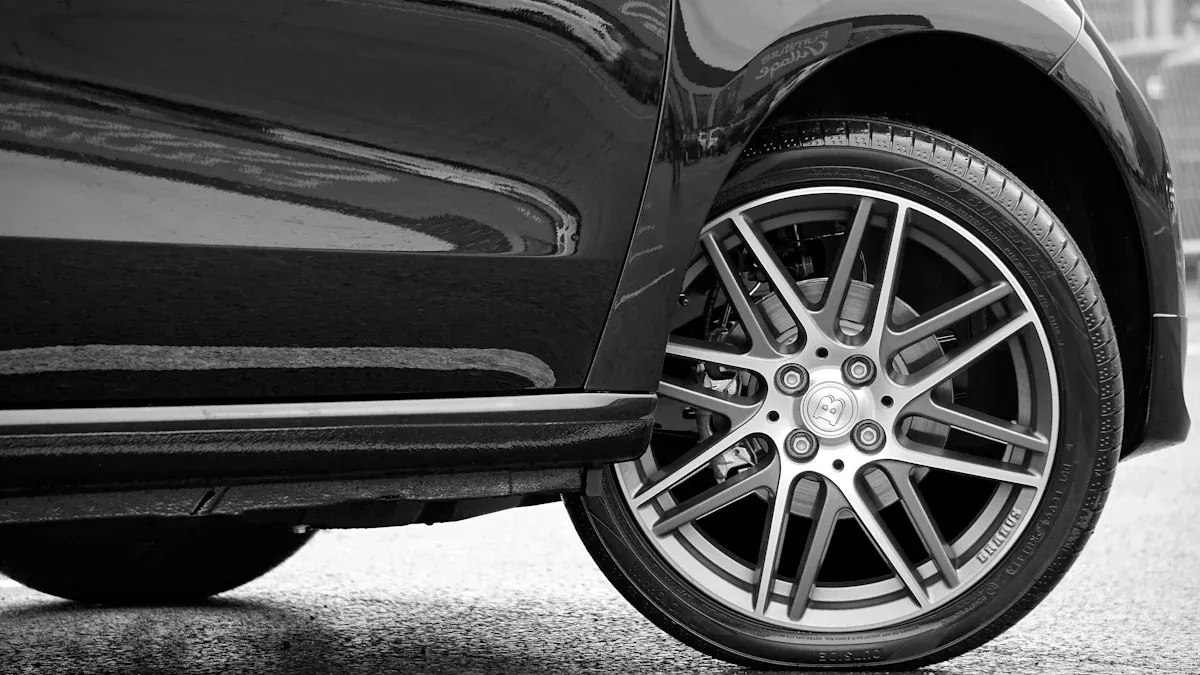
Material Degradation and Environmental Exposure
You face many risks to your tyre valve every day. Material degradation is one of the most common reasons for tire valve stems to fail. When you drive, your tyre valve faces harsh environments. Moisture, road salt, and chemicals attack the valve. Over time, corrosion weakens the valve stem. This makes it easier for air to leak out of your tyre. Corrosion is a chemical reaction between the valve and things like water or salt. This reaction eats away at the metal or rubber, making the valve less reliable. Fluctuating temperatures also cause the valve to expand and contract. This stress can lead to cracks or misalignment. If you do not check your tyre valve often, you may not notice this damage until your tyre loses air. Lack of lubrication can also cause metal parts inside the valve to wear out faster. You should always inspect your tire valve stems for signs of rust, cracks, or wear.
- Corrosion from moisture and chemicals weakens the valve.
- Thermal stress from hot and cold weather causes cracks.
- Lack of lubrication increases wear between metal parts.
Tip: Regularly check your tyre valve for rust or cracks, especially after driving in wet or salty conditions.
Road Hazards and Physical Damage
You encounter many hazards on the road that can damage your tyre valve. Road debris, such as rocks or metal pieces, can hit the valve stem and cause it to bend or break. Hitting a curb can also harm the valve. When the valve stem gets damaged, it cannot keep an airtight seal. This leads to air loss from your tyre. Physical damage is different from corrosion because it happens suddenly. You might not notice the problem until your tyre pressure drops. If you drive with a damaged valve, your tire can lose air quickly. This puts you at risk for a blowout or loss of control. Always check your tire valve stems after hitting debris or curbs.
Manufacturing Defects and Installation Issues
Sometimes, tire valve stems fail because of problems during manufacturing or installation. Defects like cracks, weak spots, or poor materials can cause the valve to break early. If the valve is not installed correctly, it may not seal well. This can lead to leaks or even cause the valve to detach from the tyre. The table below shows some common defects and errors:
| Cause Category | Example Defects or Errors | Effects on Valve Stem |
|---|---|---|
| Manufacturing Defects | Cracks, weak materials, poor design | Leakage, fractures, early failure |
| Installation Errors | Incorrect torque, poor fit, loose connections | Air leaks, stem bending or breaking |
You should always choose quality tire valve stems and have them installed by professionals. Regular inspections help you spot faulty valve stems before they cause tyre problems. If you notice any issues, replace the valve right away to keep your tyre safe.
New Risks with Modern Car Tyre Valve Designs
Modern car tyre valve designs in 2025 bring new features to your vehicle. You now see smart valves with built-in sensors, Bluetooth, and Tire Pressure Monitoring Systems (TPMS). These advanced valves help you track your tire pressure and temperature in real time. You get alerts on your dashboard or smartphone if your tire loses air or gets too hot. While these features improve safety, they also introduce new risks you need to understand.
Here are some of the main risks with modern car tyre valve designs:
- Smart valves collect and send sensitive data about your vehicle and driving habits.
- Bluetooth-enabled valves transmit information wirelessly, which can expose your data to hackers.
- Data privacy becomes a concern because your personal and vehicle information may be at risk.
- Regulations like GDPR and CCPA require companies to protect your data, but following these rules can be difficult.
- The lack of clear security guidelines for Internet of Things (IoT) devices creates confusion for both drivers and manufacturers.
- Manufacturers may face legal problems if a cyberattack on a smart valve leads to a safety issue.
Note: You should always check if your smart valve system uses secure connections and follows privacy laws. Ask your service provider about the safety of your data.
You need to stay alert to these new risks. Hackers can target Bluetooth or wireless systems in your car. If someone gains access to your valve data, they could track your location or even try to interfere with your tire pressure readings. This could put your safety at risk. You should also know that not all smart valves follow the same security standards. Some may offer better protection than others.
When you choose a modern car tyre valve, look for products from trusted brands that focus on cybersecurity and data privacy. Regularly update your vehicle’s software and ask your mechanic about the latest safety features. By staying informed, you help protect both your tires and your personal information in 2025.
Warning Signs of Failing Wheel Valve Stems

Visible Cracks, Splits, or Deformation on the Valve Stem
You can spot early signs of faulty car tyre valve by looking closely at your tyre. Check the car tyre valve for any visible cracks, splits, or bends. These changes often mean the valve has started to break down. Rubber valve stems can dry out and crack from sun, heat, or chemicals. Metal valves may show corrosion, which looks like a white powder or rust. If you see any of these problems, your tyre valve maintenance needs attention right away. Here are some common signs to watch for:
- Cracks or splits on the rubber part of the valve
- Bent or deformed valve stems
- Corrosion or white residue on metal valves
- Bubbles forming when you apply soapy water to the valve stem
If you notice these signs of faulty car tyre valve, replace the valve to keep your tyre safe.
Slow or Sudden Tire Air Loss
You may notice your tyre losing air slowly or all at once. Both can point to a failing car tyre valve. A slow leak often means the valve has a small crack or the core inside is loose. Sudden air loss can happen if the valve splits or breaks. You might hear a hissing sound near the valve, which means air is escaping. Sometimes, you find it hard to inflate your tyre or keep the pressure steady. Regular tyre valve maintenance helps you catch these problems early. Look for these signs:
- Consistent low tyre pressure in one tire
- Hissing sound near the car tyre valve
- Bubbles when you use soapy water on the valve stem
- Difficulty inflating the tyre
If you see these signs of faulty car tyre valve, act quickly to avoid tire pressure issues and keep your tyre safe.
TPMS Alerts and Unusual Pressure Drops
Modern vehicles use Tire Pressure Monitoring Systems (TPMS) to warn you about tyre problems. If your car tyre valve fails, the TPMS may trigger a warning light on your dashboard. This alert often means your tyre has lost pressure or the sensor cannot read the pressure correctly. Valve damage or poor installation can cause the sensor to fail or give false readings. If you see a TPMS warning or notice unusual drops in tyre pressure, check your car tyre valve right away. Good tyre valve maintenance helps prevent these alerts and keeps your tyre performing well.
Tip: Always include a valve check in your regular tyre valve maintenance routine. Early action can prevent bigger problems and keep your tyre safe.
Hissing Sounds or Noticeable Air Leaks
You can often detect a failing wheel valve stem by listening for hissing sounds or noticing air leaks near your tire. These signs give you important clues about the health of your car tyre valve. When you hear a hissing sound, air is escaping from somewhere it should not. This usually means your valve stem has a leak or damage.
To check for leaks, follow these steps:
- Stand close to each tire and listen carefully. A steady hissing sound near the valve stem often means air is leaking out.
- Look at the valve stem. If you see dirt, debris, or if the valve cap is missing, the risk of leaks increases.
- Mix a small amount of soap with water. Spray or dab this mixture onto the valve stem area. If you see bubbles forming, you have found the exact spot where air escapes.
- Check for loose fittings or cracks in the valve stem. Sometimes, tightening the valve or replacing a worn seal can stop the leak.
Tip: Always keep a valve cap on each tire. The cap helps block dirt and moisture, which can cause leaks or damage.
Hissing sounds are not the only warning sign. You might also notice your tire looks flatter than usual or feels soft when you press it. If you ignore these signs, your tire could lose air quickly and put you at risk for a blowout or poor handling.
A simple soap and water test can help you find leaks before they become serious problems. If you find bubbles or hear hissing, replace the valve stem as soon as possible. Regular checks and quick action keep your tires safe and your vehicle running smoothly. By paying attention to these small details, you protect yourself and others on the road.
Best Practices for Wheel Valve Stem Maintenance and Tire Safety in 2025
Inspection and Maintenance Tips for Car Tyre Valves
You play a critical role in keeping your tyres safe by following proper tyre valve maintenance. Regular inspection helps you spot problems before they become serious. Here is how you can solve tyre valve problems and keep your tyres in top condition:
- Use a reliable tire pressure gauge to check your tyre pressure every month and before long trips. Always measure when your tyres are cold.
- Remove the valve cap and press the gauge onto the valve stem. Make sure you get an accurate reading.
- Inflate your tyres to the pressure recommended in your vehicle’s manual or on the tyre placard.
- Never ignore the TPMS warning light. Even a small drop in pressure can lead to tyre failure.
- Inspect your spare tyre for correct pressure and condition. Keep all tools ready for emergencies.
- Secure all valve caps tightly. This step prevents air leaks and keeps dirt out.
- Look at your tyre sidewalls for cracks, bulges, or dry rot. These signs may point to valve problems.
- Schedule regular maintenance with a certified tyre technician. They use calibrated gauges, check tread depth, and inspect for damaged or misaligned valve stems.
Tip: Make tyre valve maintenance part of your routine. Regular checks and timely replacements help you avoid unexpected tyre issues.
Routine inspection and maintenance not only improve safety but also boost the efficiency of your vehicle. Trucking companies that follow strict maintenance protocols have seen up to a 40% drop in tyre-related accidents. You can achieve similar results by staying alert and proactive.
Recommended Replacement Intervals for Wheel Valve Stems
You should know when to perform tyre valve replacement to keep your tyres safe. Experts recommend you replace tire valve stems during every tyre change or major tyre service. If you see any cracks, wear, or damage, do not wait—replace the valve stem right away. Even a small leak means you need tyre valve replacement.
Here are the main points for tyre valve replacement:
- Replace valve stems during regular tyre maintenance or when you change tyres.
- Change the valve stem if you see visible damage, cracks, or wear.
- If you detect any air leakage, even if it seems minor, perform tyre valve replacement.
- Focus on the condition of the valve stem, not just the age or mileage.
You do not need to wait for a set number of years or miles. Instead, pay attention to the condition of your tyre valves. This approach helps you maintain tire pressure and avoid sudden failures. Tyre valve replacement is a simple step that protects your safety and the efficiency of your vehicle.
Choosing Quality Valve Stems and Professional Installation
Choosing high-quality valve stems and getting professional installation makes a big difference in tyre safety and efficiency. Low-quality or worn valve stems can cause slow leaks, leading to underinflation and possible tyre damage. When you select premium valve stems, you reduce the risk of air leaks and extend the life of your tyres.
Professional installation ensures the valve stem fits correctly and is torqued to the right level, especially on aluminum wheels. Too little torque can cause leaks, while too much can damage the wheel or cause corrosion. A skilled technician will inspect your tyres and rims, mount and balance the tyres, and align them for the best performance.
Here is a quick table to show how you can solve tyre valve problems with quality products and expert service:
| Step | Why It Matters |
|---|---|
| Choose quality valve stems | Prevents leaks and extends tyre life |
| Use professional installation | Ensures correct fit and torque, avoids damage |
| Replace valve stems during tyre changes | Reduces risk of failure and boosts safety |
Advancements in 2025 have brought stronger materials like brass and stainless steel, which resist corrosion and wear. Many valve stems now include improved seals and smart sensors. These features help you spot pressure problems early and keep your tyres at the right pressure. By investing in quality and expert service, you support the safety and efficiency of your vehicle.
Note: The critical role of car tyre valve maintenance cannot be overstated. Tyre valve replacement and regular checks are your best tools for preventing tyre failures and ensuring safe, efficient driving.
Integrating Valve Stem Checks with Routine Tire Service
You can make your vehicle safer by including valve stem checks in your regular tyre service. When you visit a service center or check your tyres at home, you should always look at the valve stems. This small step helps you catch problems early and keeps your tyres working well.
Every time you perform routine tyre service, follow these steps to check your valve stems:
- Remove the valve cap from each tyre. This lets you see the valve stem and check for dirt or damage.
- Use a tire pressure gauge on the valve stem. This gives you an accurate reading of your tyre pressure.
- Adjust the pressure if needed. You can add or release air through the valve stem to reach the correct level.
- Replace the valve cap tightly. This keeps out dirt and moisture, which can damage the valve and cause leaks.
Tip: Always use a reliable tire pressure gauge. This tool helps you spot pressure changes that may signal a faulty valve stem.
When you add valve stem checks to your tyre service, you help prevent leaks and uneven wear. Regular inspections let you find cracks, splits, or other signs of damage before they cause bigger problems. You also protect the sensors in modern Tire Pressure Monitoring Systems (TPMS). These sensors sit inside the valve stem and need to stay clean and dry to work well. Even with TPMS, you should still check your valve stems by hand. Manual checks help you spot dirt or moisture that could stop the sensor from working.
A good routine for tyre service includes more than just checking tread and pressure. You should also:
- Look for visible cracks or corrosion on the valve stem.
- Listen for hissing sounds that mean air is leaking.
- Use soapy water to test for bubbles around the valve stem.
- Make sure the valve cap is always in place after service.
Here is a table to help you remember what to check during each tyre service:
| Tyre Service Step | What to Do | Why It Matters |
|---|---|---|
| Remove valve cap | Inspect for dirt or damage | Prevents contamination |
| Check pressure | Use a tire gauge on the valve stem | Ensures accurate readings |
| Adjust pressure | Add or release air as needed | Maintains correct tyre performance |
| Inspect valve stem | Look for cracks, splits, or corrosion | Stops leaks and early tyre failure |
| Replace valve cap | Secure tightly after inspection | Blocks dirt and moisture |
By making valve stem checks a habit, you support the health of your tyres and your safety on the road. You also help your tyres last longer and improve your vehicle’s fuel efficiency. Regular tyre service with valve stem checks gives you peace of mind every time you drive.
Remember: A few extra minutes spent checking your valve stems during tyre service can save you from costly repairs and dangerous situations later.
You protect your vehicle by caring for the wheel valve stem. This small part guards tire pressure, which keeps your car stable and helps you avoid blowouts. Regular checks and timely replacement, especially with new 2025 technology, help prevent slow leaks and underinflation. Many companies have seen fewer accidents after using advanced monitoring systems. Remember, even a tiny valve stem can ensure your safety and security on the road. Pay attention to these details to maintain top tire performance and safety.
FAQ
How often should you check your wheel valve stems?
You should check your wheel valve stems every month. Always inspect them before long trips. Look for cracks, splits, or corrosion. Early checks help you spot problems before they cause air loss or tire failure.
Can a faulty valve stem trigger a TPMS warning?
Yes. A damaged valve stem can cause your Tire Pressure Monitoring System (TPMS) to show a warning light. This alert means your tire may have lost pressure or the sensor cannot read the pressure correctly. Always check the valve stem if you see a TPMS alert.
What is the best way to test for valve stem leaks?
Mix soap and water. Apply it to the valve stem. Watch for bubbles. Bubbles mean air is escaping. This simple test helps you find leaks quickly. Replace the valve stem if you see bubbles.
Do you need to replace valve stems when changing tires?
Yes. Always replace valve stems when you get new tires. Old stems can crack or leak. New stems help keep your tires safe and maintain proper air pressure.
